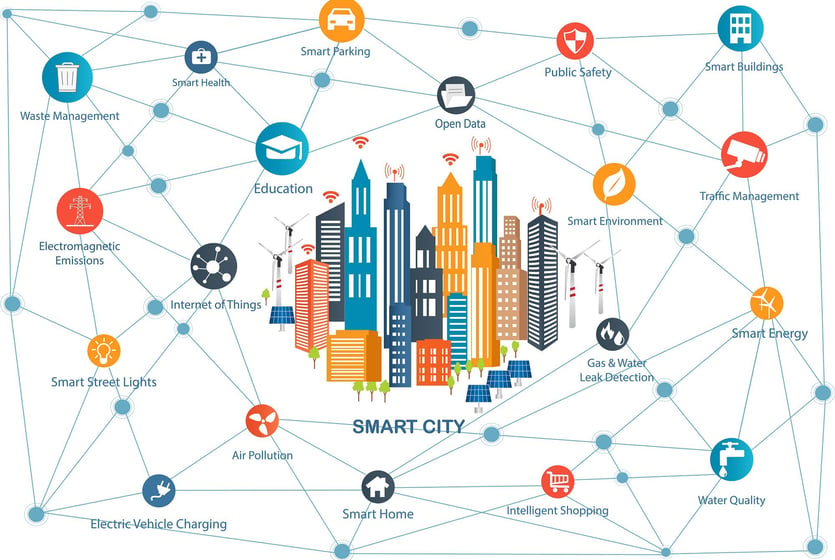Building Resilient Communities: The Role of Sustainable Infrastructure
Explore the role of sustainable infrastructure in building resilient communities in our latest blog post. Discover how sustainable infrastructure enhances quality of life, mitigates climate change, fosters economic growth, and engages stakeholders. Join the conversation on creating thriving, eco-friendly communities through sustainable infrastructure.
Francois Leclerc
6/11/20232 min read


Introduction:
In this blog post, we delve into the crucial role of sustainable infrastructure in building resilient communities. As climate change and urbanization pose new challenges, it is vital to adopt innovative and sustainable solutions that enhance the quality of life while minimizing environmental impact. Join us as we explore how sustainable infrastructure can create thriving, resilient, and eco-friendly communities.
Understanding Sustainable Infrastructure:
Sustainable infrastructure encompasses the planning, design, construction, and management of physical systems that support human activities while minimizing resource consumption and environmental harm. It focuses on integrating renewable energy sources, green building practices, efficient transportation systems, and smart technologies to create infrastructure that is environmentally responsible and socially equitable.
Enhancing Quality of Life:
Sustainable infrastructure plays a critical role in enhancing the quality of life for community members. It provides access to clean and renewable energy sources, reducing dependency on fossil fuels and improving air quality. Well-designed green spaces, parks, and recreational areas promote physical and mental well-being. Sustainable transportation options, such as walking and cycling infrastructure, promote healthier lifestyles and reduce traffic congestion. Additionally, sustainable infrastructure ensures reliable and resilient services, such as clean water, waste management, and efficient public transportation systems.
Mitigating Climate Change:
As communities face the impacts of climate change, sustainable infrastructure offers solutions to mitigate and adapt to these challenges. Renewable energy generation and energy-efficient buildings help reduce greenhouse gas emissions. Climate-resilient design techniques, such as green roofs and permeable pavements, mitigate urban heat island effects and manage stormwater runoff. By incorporating nature-based solutions like urban forests and green corridors, sustainable infrastructure supports biodiversity and reduces the vulnerability of communities to climate-related disasters.
Fostering Economic Growth:
Sustainable infrastructure also serves as a catalyst for economic growth and job creation. Investments in clean energy projects, such as solar and wind farms, stimulate local economies and create employment opportunities. Retrofitting existing buildings for energy efficiency generates savings for businesses and homeowners. Sustainable urban development attracts investments and boosts tourism, contributing to long-term economic sustainability. Moreover, the shift towards sustainable infrastructure fosters innovation, driving the growth of green industries and technologies.
Engaging Stakeholders:
The successful implementation of sustainable infrastructure requires collaboration among various stakeholders. Engaging community members, local governments, businesses, and organizations fosters a sense of ownership and ensures that infrastructure projects align with community needs. Inclusive decision-making processes promote social equity and enable the integration of diverse perspectives. By involving stakeholders, sustainable infrastructure projects become a collective effort, enhancing community resilience and fostering a sense of pride and unity.
Conclusion:
Sustainable infrastructure serves as the backbone of resilient communities. By prioritizing environmentally friendly practices, promoting social equity, and fostering economic growth, sustainable infrastructure creates a foundation for thriving and resilient communities. As we invest in sustainable infrastructure, we pave the way for a greener future that is both socially inclusive and environmentally sustainable.
Join the conversation! Share your thoughts on sustainable infrastructure and its role in building resilient communities. How have you witnessed the benefits of sustainable infrastructure in your community? Let's inspire each other to advocate for sustainable practices and contribute to the development of resilient and sustainable communities.
Address
919 North Market Street, Suite 950, Wilmington, Delaware, 19801.
Contacts
info@eco360llc.com
